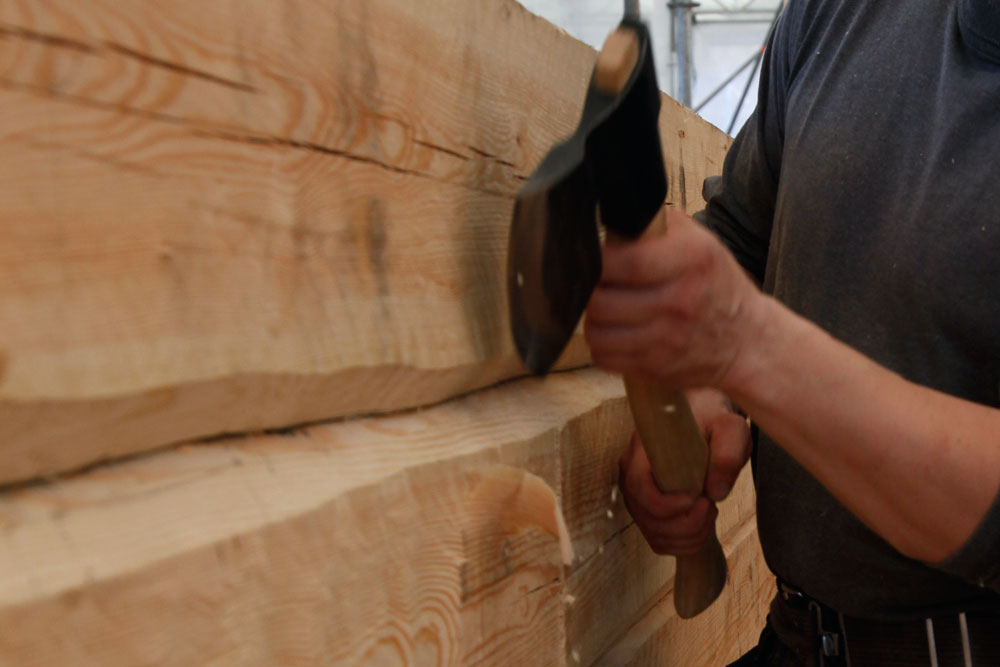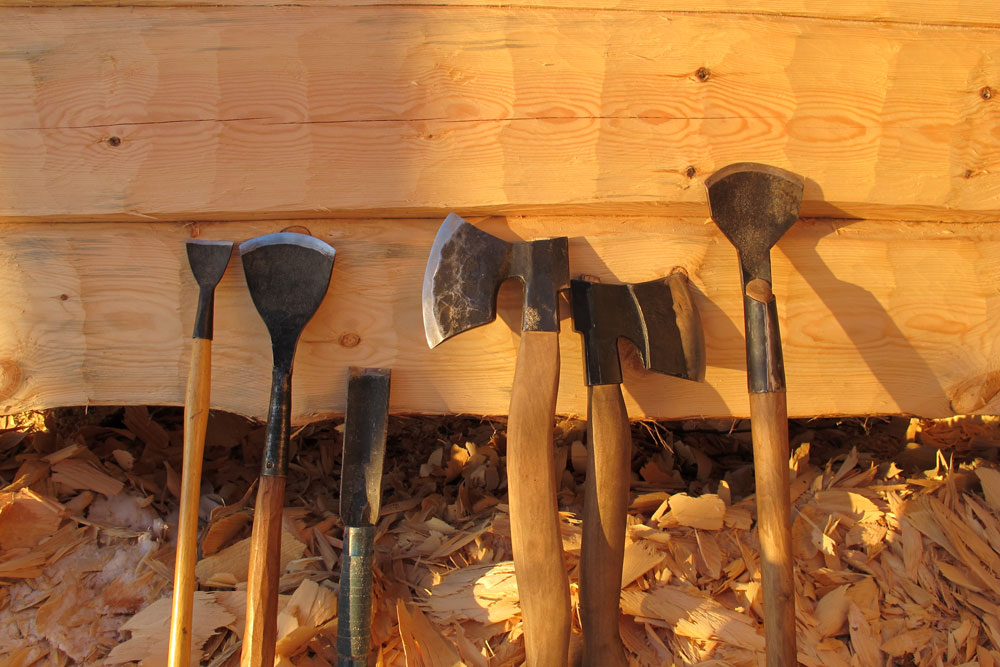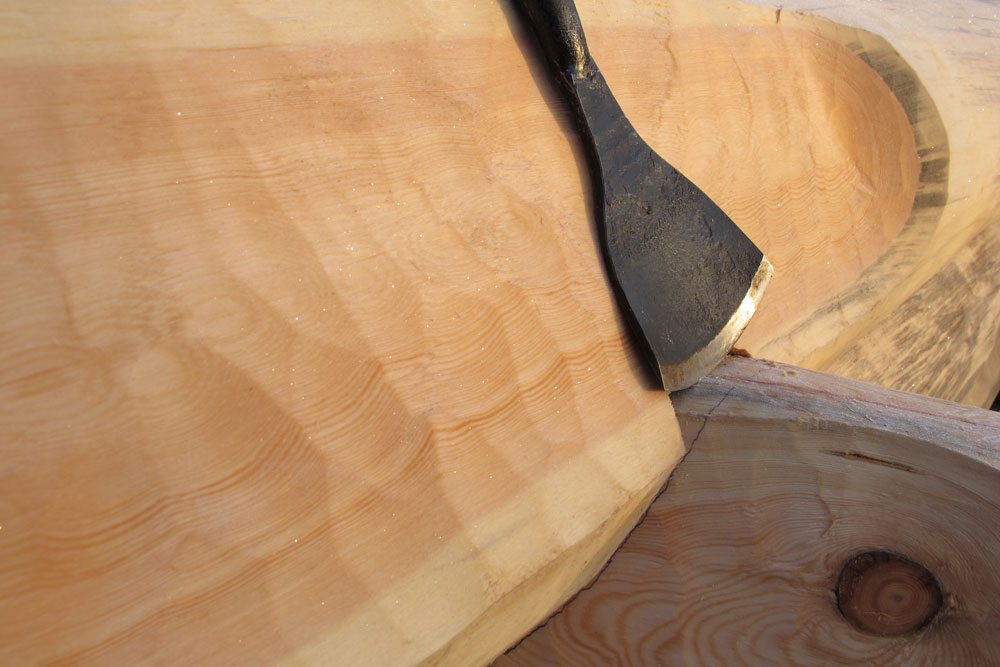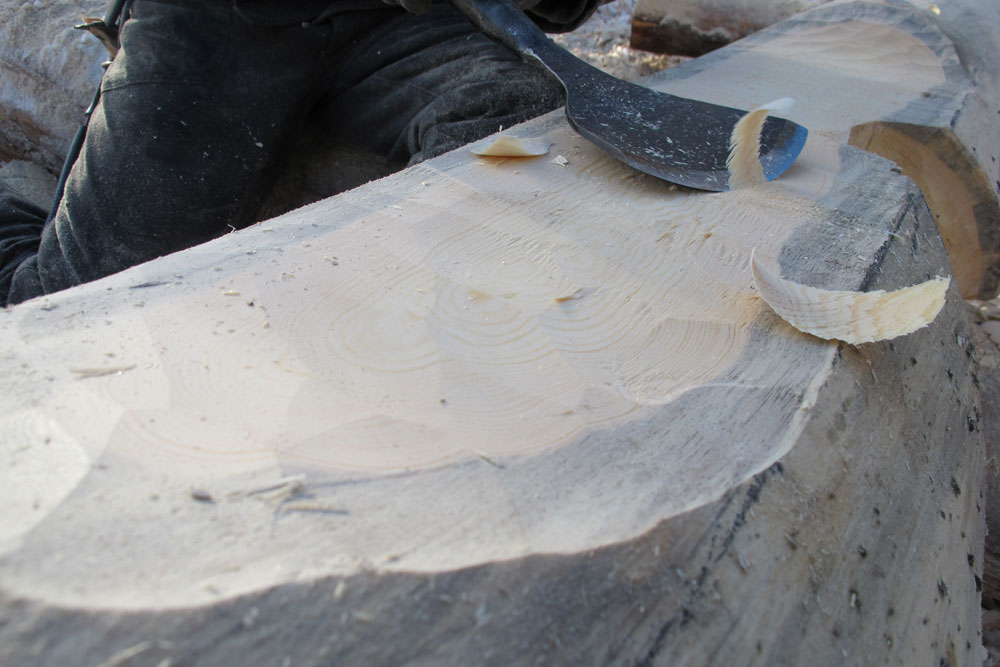Log work 100% handcrafted

Today several modern tools are available to assist with a log building’s finishing touches that we take advantage of if necessary. However, no machine can produce a surface as fine as one made using a drawknife, carving axe or carving chisel. Surfaces that are finished using hand tools are vibrantly beautiful. The hand carving process causes damaged wood fibre cells on the surface of the wood to close up creating a beautiful shiny appearance. This also improves the building’s weather durability. Hongos is proud to offer an option where all visible surfaces of the log building have been finished using hand tools.
A drawknife is used for the refining of visible surfaces of both naturally shaped round logs and of the sides of square logs.
 ‘Piilupetkele’ (a special carving chisel) is used to finish surfaces on smaller locations such as on the diamond notch’s or saddle notch’s saddles, on doors, on sauna benches or even on floor boards. The width of the ‘piilupetkele’ is smaller than that of the ‘piilukirves’ (a special carving axe) and the type of the finishing touch is called ‘sekapiilutus’.
‘Piilupetkele’ (a special carving chisel) is used to finish surfaces on smaller locations such as on the diamond notch’s or saddle notch’s saddles, on doors, on sauna benches or even on floor boards. The width of the ‘piilupetkele’ is smaller than that of the ‘piilukirves’ (a special carving axe) and the type of the finishing touch is called ‘sekapiilutus’.
Piilukirves (a carving axe) is used for larger shaped finishing touch, often in wave shaped patterns. There are several variations of the patterns and each carver has their own style. Variations of this decoration are ‘hajapiilutus’ and ‘kalansuomupiilutus’, among many others.
A ‘Maalu’ is a singular wave shape in a log, made with a ‘piilukirves’ or ‘piilupetkele’ (see above).
‘Kourukirves’ (a chute axe) is a specially shaped axe, used to cut a long groove into a log. When using kourukirves the groove is slightly round, seeking to imitate the groove of the lower log on top of which the log is being mounted on. The groove is intricately designed for a tight fit with controlled ‘tightening’ of the building with time. A neat and functional groove can also be carved using a chainsaw or other tools. It is essential to avoid sharp ‘v-style’ grooves, which often leave too much space between interlocking segments with the resulting uncontrolled tightening of the building leading to vertical cracking. Hongos never uses v-style grooves in any of it’s buildings.










